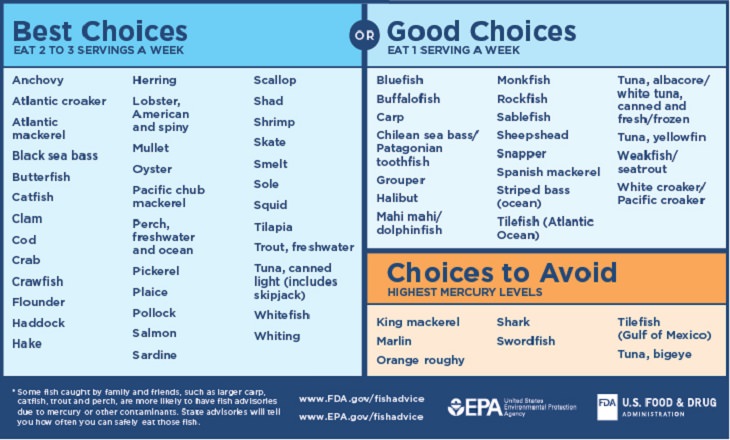Fish is delicious and fast to cook, no wonder it’s a popular weekday meal all around the world. On top of that, there are numerous varieties of fish that can be used in countless ways, so the taste is never the same. Finally, fish has countless health benefits and is considered one of the healthiest sources of protein. Unfortunately, this last fact, at least regarding some fish, may soon change, as seafood and some species of fish that live in the sea have been found to contain rising levels of methylmercury, an extremely dangerous substance that forms when mercury is mixed with water-dwelling bacteria.
Methylmercury is a neurotoxin, meaning that it can impair the functioning and development of the nervous system. It has been estimated that over 80% of methylmercury exposure in the United States comes from fish consumption. With the levels of methylmercury in many fish species we eat rising rapidly, these fish may become unsafe to eat.
What Types of Fish Are Affected?
While all sea animals and corals have been observed to contain more methylmercury, the types of sea animals affected the most are large predators, such as sharks, swordfish, tuna, king mackerel, Alaskan cod, and several others. To understand why this is the case, we must understand where methylmercury comes from and how it gets into the fish we eat and, ultimately, our bodies.
The majority of methylmercury is created through water pollution. Water-filtering algae and corals absorb the toxic substance and ultimately get eaten by shrimp, squid, and smaller fish, which store the neurotoxin in their tissues. These types of sea creatures, in turn, are the primary food source for sea predators that are not only larger in size, but also live longer, accumulating even more methylmercury in their bodies.
This chain reaction yields an expected result: the sea life that is on the top of the food chain accumulate the most of the toxin. This process is called bioaccumulation, and unfortunately, humans are not immune to it either.
Overfishing and Warming Oceans Further Spike Up Methylmercury Levels in Fish
The world beneath the water surface is not as static as we might think. If it was, then we would have seen a decline in methylmercury in fish over the past 30 years, as mercury pollution decreased by 30% from 1990. Instead, scientists from a Harvard study observing methylmercury levels in Atlantic fish since the 1970s until the 2000s found a rise in methylmercury levels in fish like cod, Atlantic bluefin tuna, and swordfish, and they suggest that overfishing and the warming of the oceans are to blame.
More specifically, the researchers found that the neurotoxin levels fluctuate in the fish depending on their diet. So, the levels of methylmercury rose in spiny dogfish populations by 33-61% when they were forced to feed on squid instead of their primary diet, cod, due to overfishing of the latter. Squid and shrimp, on average, have higher levels of the toxin in their flesh, which is why the dogfish that ate the squid, too, accumulated significantly more of the toxin.
However, this is only half of the puzzle, as the scientists also report that rising water temperatures require some fish, particularly the fast-swimming tuna, to eat more prey, which, in turn, can also increase the levels of methylmercury in its tissues, so much so that the study found a yearly 3.5% increase of the toxin in Atlantic bluefin tuna populations between 2012 and 2017, rendering the popular fish one of the least healthy choices available.
What Does It All Mean For Consumers?
While the rising levels of the neurotoxin are certainly alarming, a lesson all of us can learn from this is that not all kinds of fish are toxic, and even the majority of those that are can be consumed in moderation. Fish is essential for a healthy diet, being an excellent source of protein, iron, vitamins, and healthy fats, and cutting it out of our diets will do more harm than good, so continue eating fish, but avoid some varieties (see chart above).
The only exception to that rule are pregnant women and children under the age of 2, as the methylmercury is particularly dangerous for brain development, so these populations should stick to the safest fish choices available. The chart above has been updated as of 2019 by the FDA and shows how often you can eat some of the most popular kinds of fish and which ones you should avoid. For an updated version of this chart, follow this link.
 Go to BabaMail
Go to BabaMail



























